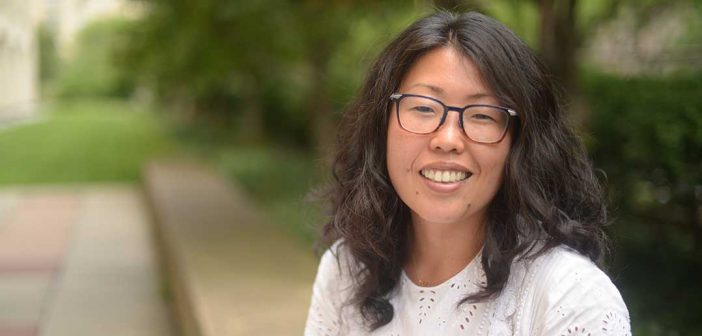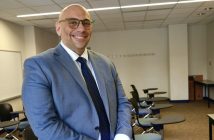In education, few topics are more fraught with tension than school integration. Recent studies have confirmed that when students who are struggling academically are taught alongside those that are thriving, both groups do better in the long run. There’s still fierce resistance though, and in New York City, a new plan being promoted in District 15 in Brooklyn that does away with admissions screening processes for middle schools is being watched closely by experts and parents alike.
If it does succeed, one of the reasons will be teachers’ abilities to simultaneously teach students of different levels of academic proficiency in the same classroom. Akane Zusho, Ph.D., a professor of educational psychology in Fordham’s Graduate School of Education, and author of Differentiated Instruction Made Practical (Routledge, 2018), says when students are properly motivated, it can be done.
Listen here
Full transcript below:
Akane Zusho: Everyone wants the best for their kids and when they’re concerned that that might not actually be the case, then people react in different ways, and I think that leads to some of the problems that we see in New York City public schools right now.
Patrick Verel: In education, few topics are more fraught with tension than school integration. Recent studies have confirmed that when students who are struggling academically are taught alongside those that are thriving, both groups do better in the long run. There is still fierce resistance though, and in New York City, a new plan being promoted in District 15 in Brooklyn that does away with admissions screenings processes for middle schools is being closely watched by experts and parents alike. If it does succeed, one of the reasons will be teachers abilities to simultaneously teach students of different levels of academic proficiency in the same classroom.
Akane Zusho, a professor of educational psychology in Fordham’s Graduate School of Education says that when students are properly motivated, it can be done. I’m Patrick Verel and this is Fordham News.
How do we know all students do better when their schools are socially and economically integrated?
Akane Zusho: From the social sciences and psychology in particular, there is evidence to suggest that when students are integrated, that they do learn from each other. Particularly when it comes to racial integrations, there is research that suggests that it does reduce prejudice. And not only that, it actually improves engagement among students. There is a particular theory called inner group contact theory. If we’re always friends with a particular type of person and then all of a sudden you get a different kind of friends and let’s say you had some preconceived notions about what that friend might represent ahead of time, the more you get to know this new friend, you’re more likely to appreciate them and value them and then that reduces prejudice.
Patrick Verel: If the research backs it up, why is there such strong resistance to it?
Akane Zusho: From a parents’ perspective, I think there is often a concern that the quality of education may go down if the schools are integrated. Whether or not that’s true is a different story. But everyone wants the best for their kids and when they’re concerned that that might not actually be the case, then people react in different ways. And I think that leads to some of the problems that we see in New York City public schools right now.
Patrick Verel: What is differentiated instruction?
Akane Zusho: Differentiated instruction is basically this idea that you would adjust your instruction to meet the needs of the students in the class. And in a class of 30 and especially in New York City public schools, oftentimes we hear teachers complain that the students that are excelling are very different than the students that are really struggling in the class. And so this idea of differentiated instruction is how do you attend to everybody’s needs and stretch them too.
Patrick Verel: Is there a maximum number of students in a classroom that this technique can work for?
Akane Zusho: So to be honest, I don’t think it’s the number of students that is as critical. I mean, obviously, some of the strategies that we teach teachers require group work and there are some physical challenges sometimes when it comes to the setup of New York City classrooms that sometimes make it difficult. A lot of times I think it really depends on the teacher and the teachers’ comfort with using some of the strategies that we teach them.
So, for example, there’s a lot of group learning work and teachers vary in their comfort level with facilitating that kind of instructional strategy. There’s also I think it varies too on teachers content knowledge. We found that teachers sometimes … Well, we know that teachers vary in how much expertise they have in the content that they’re teaching and that impacts whether or not they can sort of see the big picture ideas that they want to get across to the students because that’s what you really need to differentiate on. In a racially integrated classroom, I think it also depends on teachers own self-awareness and their cultural knowledge of their students.
Patrick Verel: If the new plan in Brooklyn succeeds, teachers who are used to teaching only the “academically gifted students” will have to quickly learn how to teach those that are also struggling academically and visa verse. And I wonder, do you think they can benefit from Differentiated Instruction Made Practical, which you and your colleague Ronda Bondi published earlier this year?
Akane Zusho: Of course, I’m biased, but I definitely think that they could they could learn something. Because, like I said before, to differentiate instruction effectively, I think it’s not an easy task. A lot of what we’re really trying to promote is this idea of teachers finding time in their lesson to look and listen for diversity because I feel like teachers, if you’re a teacher and you’re lecturing all the time, what we find in that is that usually, there’s some students are going to get it and then there’s obviously a handful students that won’t get it. And unless you make the students thinking visible to them and to you, you won’t be able to sort of know that some of the kids are not getting it.
And then we also have a lot of, like I said previously, group learning routines because we feel like that allows teachers to listen to kids because they’ll be talking with each other. And then it becomes clear to the students and to the teacher if they are getting it. What our book is really focusing on is getting teachers to engage the extremes because if you engage the extremes, then most likely you’re engaging everybody.
For differentiation of instruction to work, you have to have a supportive learning environment, an environment where students perceive that they belong and that they are valued members of the classroom because a lot of what we ask teachers to do does require students to feel comfortable voicing their opinions especially when they’re struggling and not being embarrassed by that. And then most importantly, confidence is key to motivation. And in fact, I think it’s probably the most important aspect of feeling motivated. If you don’t feel like you are competent, the quality of your behavior usually suffers.
I teach statistics here at Fordham and I also face this all the time where some students get it and other students don’t. I often break up the class into groups at one point so that students who need more personalized attention can have me for five or 10 minutes so that they feel confident enough to go back to their groups and engage in there. But for that to work, they need to actually feel like they’re not embarrassed and that they can come to me.
Patrick Verel: So what advice would you give to people who want to see this new plan being put into action in Brooklyn actually succeed?
Akane Zusho: You need to shift the culture of the schools to one that is embracing of all students. And so what that might require is changing policies so that there’s not so much a focus on awards, let’s say and certain groups excelling. Because usually, when you do that, when you heighten awareness about one group excelling, you’re implicitly giving a message that the other kids can’t, or they’re not at that level. They could get rid of screeners but if they’re still tracking students into different like classes, that’s problematic.
Two, I think professional development is probably going to be key where teachers are going to need to become better versed in differentiated instruction or personalized instruction. I think the teachers need to … and the kids too, they need to see that they can learn from each other. It’s not going to be easy. The problem is that I don’t think there’s one specific thing that will ensure that this will be a success, but the fact that they’re willing to do this I think is a positive move in the right direction.



